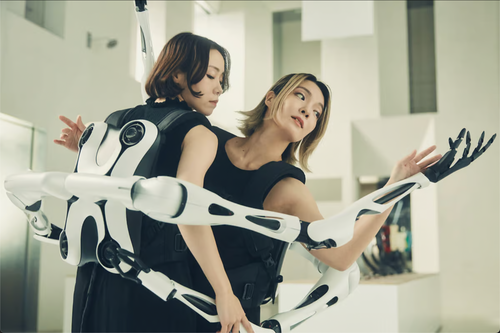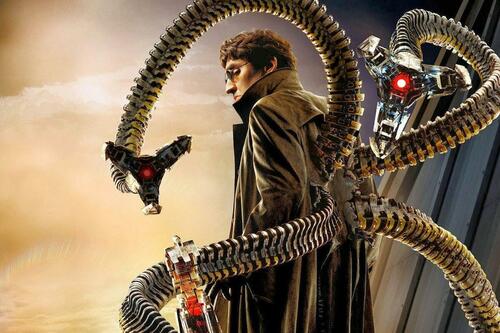
Scientists from the University of Tokyo have developed a set of robotic arms that can be attached to a user's back. These arms mimic the appearance of Otto Octavius (also known as Doctor Octopus), a fictional character and one of Spider-Man's most enduring enemies, who wields mechanical, tentacle-like appendages.
Called "Jizai Arms," the wearable backpack can power up to six detachable robot arms and moves with the user's body.
"The system was designed to enable social interaction between multiple wearers, such as an exchange of arm(s), and explore possible interactions between digital cyborgs in a cyborg society," the scientists wrote in a research note titled "Social Digital Cyborgs: The Collaborative Design Process of JIZAI ARMS" that was published in the ACM Digital Library, a database of full-text articles and bibliographic literature covering computing and information technology.
"From our role-playing sessions, we found that our bodies could precisely sense the attachment/detachment of arms, and we especially felt a strong impact when detaching or reducing the number of robotic arms worn," the scientists stated in the paper.
"We also suggested adding customizability to the robotic arms to generate a sense of social ownership, an individual's sense of ownership towards a specific artificial body part shared among multiple persons, as a future research topic," they continued.
This technology reminds us of Octavius' mechanical tentacles.
Besides, artificial intelligence -- we might also want to prepare for a world of cyborgs.
Scientists from the University of Tokyo have developed a set of robotic arms that can be attached to a user’s back. These arms mimic the appearance of Otto Octavius (also known as Doctor Octopus), a fictional character and one of Spider-Man’s most enduring enemies, who wields mechanical, tentacle-like appendages.
Called “Jizai Arms,” the wearable backpack can power up to six detachable robot arms and moves with the user’s body.
“The system was designed to enable social interaction between multiple wearers, such as an exchange of arm(s), and explore possible interactions between digital cyborgs in a cyborg society,” the scientists wrote in a research note titled “Social Digital Cyborgs: The Collaborative Design Process of JIZAI ARMS” that was published in the ACM Digital Library, a database of full-text articles and bibliographic literature covering computing and information technology.
“From our role-playing sessions, we found that our bodies could precisely sense the attachment/detachment of arms, and we especially felt a strong impact when detaching or reducing the number of robotic arms worn,” the scientists stated in the paper.
“We also suggested adding customizability to the robotic arms to generate a sense of social ownership, an individual’s sense of ownership towards a specific artificial body part shared among multiple persons, as a future research topic,” they continued.
[embedded content]
This technology reminds us of Octavius’ mechanical tentacles.
Besides, artificial intelligence — we might also want to prepare for a world of cyborgs.
Loading…







